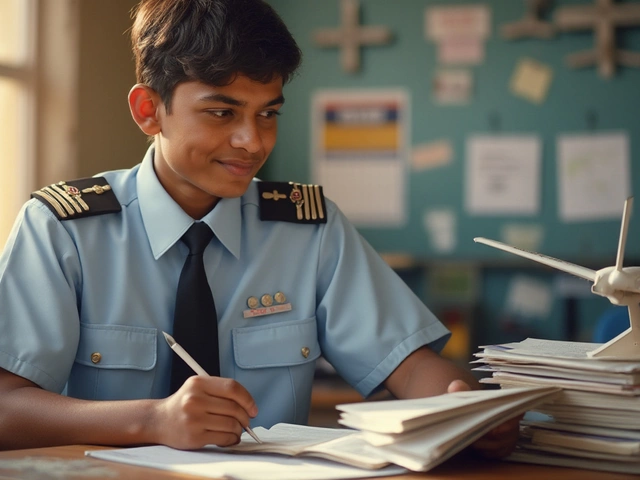Picking the right syllabus for your kid’s school life? It’s not as simple as grabbing a school bag and heading out. Most parents stop at CBSE, maybe because their friends talk about it, or schools advertise it everywhere. But how do you know if it really fits your child?
CBSE isn’t just “that board with tough exams.” It’s actually designed to help kids understand concepts instead of just cramming facts. Schools under CBSE follow a common structure across India, so even if you need to move cities (a big deal for jobs like central government workers), your child won’t have to start from scratch with a totally new syllabus.
This board has been around since 1962 and now covers more than 27,000 schools worldwide. It’s also recognized by almost all major Indian colleges and the government. That makes it a solid bet if your kid dreams of competitive exams like NEET or JEE—because those tests use the CBSE format and topics.
If you’re trying to weigh the day-to-day life your kid will face, think about subject choices too. CBSE keeps things practical with options that don’t jam-pack the timetable, and its textbooks (especially NCERT) focus on clear, step-by-step learning. No wonder so many parents and students swear by it for building strong basics.
- Breaking Down the CBSE Approach
- Real Benefits for Students
- Comparisons With Other Syllabuses
- Tips for Parents Navigating the Choice
Breaking Down the CBSE Approach
The CBSE syllabus runs on a system that focuses on building real understanding, rather than rote memorization. The structure comes straight from the National Council of Educational Research and Training (NCERT), so most CBSE schools use the same textbooks and study material. If you’ve heard about the famous NCERT books, this is where they come in—they’re made to be simple, straight to the point, and easy to grasp for every kid.
CBSE doesn’t just throw tons of information at students. The board breaks ideas into small, logical parts so that kids learn in steps, not sprints. Example? In math, the basics are drilled in class VI to VIII before higher stuff like algebra even shows up. That careful sequencing pays off—kids aren’t left scratching their heads when things get tougher later.
Another big part is the focus on science and math. These subjects get plenty of attention, especially because the major entrance exams in India (JEE, NEET, CUET) are based on the same syllabus. Kids prepping for these tests are already ahead if they are in a CBSE school.
CBSE also switched up their exam style over the last few years. Instead of just mugging up pages, kids have to write answers that show they understand, not just remember. You’ll see questions that ask for examples, real-life applications, and logical thinking. They even introduced some multiple-choice and competency-based questions starting from class IX.
But what about flexibility? This board gives a good spread of subject choices from class IX onward, not pinning students to science or commerce too early. And hands-on projects, practicals, group discussions—they’re not just buzzwords in CBSE. The syllabus makes space for them, aiming to keep things interesting and get everyone involved.
Real Benefits for Students
So, what do kids actually get out of studying under CBSE? The first thing parents usually notice is how the board focuses on strong basics. The NCERT books, which are the core of the CBSE syllabus, break down tough ideas in a way that’s easy for students to understand. This sets a solid foundation that helps not just during school, but well beyond that—think of national level competitive exams where these same basics pop up again and again.
One big plus: the exam style. CBSE asks more application-based questions—less “rote” memorization, more actual understanding. Starting from Class IX, students face case study questions, problem-solving challenges, and experiments in science. This style’s not just good for exams; it’s better for remembering things long term.
Here are some concrete perks students often talk about:
- Uniform curriculum: If your family moves between states, your child faces the same curriculum and textbooks. No stressful adjustments needed.
- Flexibility: In classes 11 and 12, CBSE offers a wide choice of combination subjects. Want to take Physics with Economics? You can actually do that.
- Career edge: Major exams like JEE (for engineering) and NEET (for medicine) are based directly on CBSE topics and NCERT books. Kids have a straight advantage since they’re already familiar with the style and tough parts.
- Skill-building beyond marks: The syllabus includes life skills, health, physical education, and digital learning. It’s not just about getting high grades, but being ready for real life too.
CBSE even tries to promote stress-free learning. Since 2021, the board has worked toward lighter, less repetitive textbooks and open-book assessments in pilot phases. Students now report less pressure compared to some state boards where notebooks overflow with memorized essays. As a tip, parents can encourage their kids to use official CBSE sample papers and mock tests—the board regularly updates these, and they’re really helpful for getting used to the exam pattern and managing time.

Comparisons With Other Syllabuses
When it comes to picking a school board, the big three you’ll hear about are CBSE, ICSE, and State Boards. Some international labels like IB and Cambridge are popping up too, especially in metro cities. So how does CBSE syllabus stack up against the rest?
Let’s look at the main points with some hard facts and real differences:
- CBSE focuses on science, math, and core subjects. It follows NCERT textbooks, which are the gold standard for Indian competitive exams. Its structure is straightforward and the marking is objective—great for those who don’t want any surprises in their results.
- ICSE dives deeper into English and practical projects. It’s famous for a heavy workload (ask any kid juggling ten papers in class 10), and the syllabus is more detailed. Some parents like ICSE for its global outlook, but keep in mind—colleges in India often give a slight advantage to CBSE when it comes to entrance exams.
- State Boards vary widely depending on the region. If your family isn’t moving often and state university is the goal, this can work, but the quality and teaching style can jump a lot from one state to another. Marking schemes might help boost scores almost too easily, which sometimes means basics get left behind.
- IB / Cambridge bring in a different style altogether, with project-based and international standards. It’s great if you might move abroad, but fees can make your head spin and the learning curve is steep. Most Indian entrance tests still stick to the CBSE blueprint, so your kid might need coaching just to match the exam format.
Here’s a quick table for a side-by-side look:
| Board | Teaching Focus | Exam Style | Suited For |
|---|---|---|---|
| CBSE | Core concepts, national exams | Objective, concise answers | Students aiming for Indian colleges, moving families |
| ICSE | In-depth, project work, English | Detailed, lengthy answers | Those looking for a wider syllabus and global flavor |
| State Board | Local relevance | Varies by state | Students staying local or in-state higher ed |
| IB / Cambridge | Projects, global curriculum | Assessments, fewer rote exams | Frequent movers, those targeting abroad |
One standout fact: in 2024, about 75% of students sitting for India’s biggest entrance exams like JEE Main and NEET came from CBSE backgrounds. That’s a clear hint of where the familiar ground lies if you want your child to compete in these tests. But if strong English, presentation, or a global move is in your family’s future, ICSE or IB might give that extra push.
The short version? Think about where your child is headed, not just what sounds popular. Each syllabus has pros and cons, so weigh what matters most in your family’s everyday life and goals.
Tips for Parents Navigating the Choice
Feeling stuck between syllabus choices? You’re not alone. Plenty of parents face the same crossroad. Here’s what can actually help you make a smart call about the CBSE syllabus.
- Check Your Child's Learning Style: CBSE’s concept-driven system works best for kids who like understanding things step by step. If your child asks 'why' a lot or enjoys hands-on problem-solving, this approach fits well. On the other hand, if your kid thrives on projects and open-ended learning, IB or ICSE might feel more natural.
- Think About Mobility: CBSE’s standardization means no nasty surprises if your job moves you across states. With more than 27,000 CBSE schools in India and 240 unaffiliated abroad, transfer headaches drop to almost zero.
- Consider Future Exams: National level tests like NEET (medicine) and JEE (engineering) follow CBSE patterns. In 2024, over 2.7 million students sat for these entrance exams, and most use CBSE-based textbooks for prep. If your child aims for these, sticking to CBSE can save a lot of extra work.
- Review Subject Options: CBSE has core subjects, but flexibility in electives grows in higher classes. Double check if the school offers combinations your child wants—some are strict with ‘science or commerce only,’ in reality.
- Visit Schools—Don’t Just Read the Prospectus: Ask how much time goes into rote memorization vs. practical application. Some CBSE schools still get stuck in old habits. Talk to current students and parents for real insights.
Now, let’s look at stats about how parents actually choose:
| Factor | Percentage of Parents Who Consider It |
|---|---|
| Mobility (transfers/job moves) | 31% |
| Exam Preparation (JEE/NEET/etc.) | 43% |
| Teaching Approach | 18% |
| School Facilities | 8% |
One more tip: don’t pressure your kid into something just because everyone else does it. Career dreams, current strengths, and happiness matter more than following the crowd. Listen to your kid’s feedback after a trial period—they’re living this every day.






Write a comment: